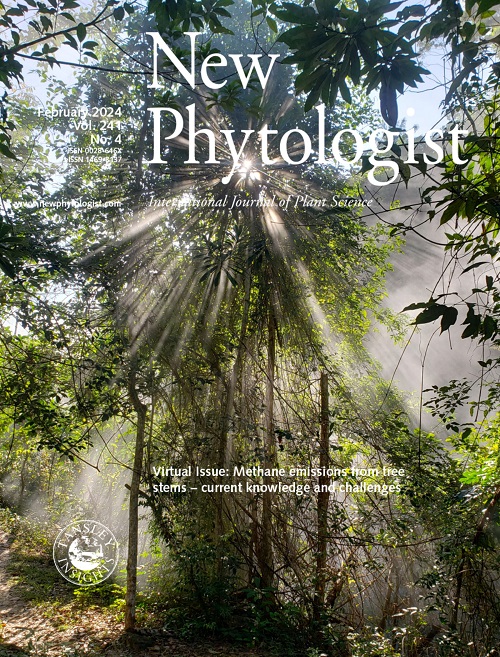GA-ABA信号对水稻生长和干旱反应的协调作用
IF 8.1
1区 生物学
Q1 Agricultural and Biological Sciences
引用次数: 1
摘要
全球变暖引起的干旱严重影响了作物生长和农业生产。植物已经进化出不同的策略来应对干旱环境。在干旱胁迫下,能源和资源应该从生长转向压力管理。然而,生长和干旱反应协调的分子机制在很大程度上仍然难以捉摸。在这里,我们发现大多数赤霉素(GA)代谢基因受到水稻缺水的调节,导致GA含量降低,从而抑制植物生长。低GA含量导致更多GA信号负调控因子SLENDER RICE 1的积累,SLENDER RICE 1通过竞争性结合后期促进复合物TAD1的共激活剂来抑制脱落酸(ABA)受体PYL10的降解,从而增强ABA反应和耐旱性。这些结果阐明了作物生长抑制与抗旱性和存活率提高的协同调节作用,为作物抗旱性育种改良提供了有用的遗传资源。本文章由计算机程序翻译,如有差异,请以英文原文为准。
Coordination of growth and drought responses by GA-ABA signaling in rice
- The drought caused by global warming seriously affects the crop growth and agricultural production. Plants have evolved distinct strategies to cope with the drought environment. Under drought stress, energy and resources should be diverted from growth toward stress management.
- However, the molecular mechanism underlying coordination of growth and drought response remains largely elusive.
- Here, we discovered that most of the gibberellin (GA) metabolic genes were regulated by water scarcity in rice, leading to the lower GA contents and hence inhibited plant growth. Low GA contents resulted in the accumulation of more GA signaling negative regulator SLENDER RICE 1, which inhibited the degradation of abscisic acid (ABA) receptor PYL10 by competitively binding to the co-activator of anaphase-promoting complex TAD1, resulting in the enhanced ABA response and drought tolerance.
- These results elucidate the synergistic regulation of crop growth inhibition and promotion of drought tolerance and survival, and provide useful genetic resource in breeding improvement of crop drought resistance.
求助全文
通过发布文献求助,成功后即可免费获取论文全文。
去求助
来源期刊

New Phytologist
PLANT SCIENCES-
CiteScore
17.60
自引率
5.30%
发文量
728
审稿时长
1 months
期刊介绍:
New Phytologist is a leading publication that showcases exceptional and groundbreaking research in plant science and its practical applications. With a focus on five distinct sections - Physiology & Development, Environment, Interaction, Evolution, and Transformative Plant Biotechnology - the journal covers a wide array of topics ranging from cellular processes to the impact of global environmental changes. We encourage the use of interdisciplinary approaches, and our content is structured to reflect this. Our journal acknowledges the diverse techniques employed in plant science, including molecular and cell biology, functional genomics, modeling, and system-based approaches, across various subfields.
 求助内容:
求助内容: 应助结果提醒方式:
应助结果提醒方式:


